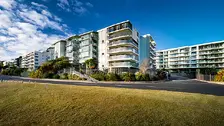High-Yield vs Low-Risk Properties: Choosing the Right Investment Type
 By
Trent Bradley
·
14 minute read
By
Trent Bradley
·
14 minute read

Every property investment presents a fundamental trade-off between risk and return. High-yield properties promise attractive rental income but typically carry greater risks around capital growth, tenant stability, or property condition. Low-risk properties offer security, reliability, and proven appreciation but usually demand premium prices that compress yields and require substantial cash flow subsidies.
Table of Contents
- Understanding High-Yield Properties
- Understanding Low-Risk Properties
- The Risk-Return Spectrum in New Zealand Property
- Strategic Positioning: Finding Your Optimal Balance
- Building Balanced Portfolios
- Common Mistakes in Risk-Return Positioning
- The Luminate Financial Group Perspective
- Frequently Asked Questions
Key Takeaways
- High-yield properties (5.5%+ gross yields) typically offer positive cash flow and lower capital requirements but deliver limited capital growth (2-3% annually) versus major centers (5-7%), often concentrated in regional centers with economic concentration risks
- Low-risk properties (3-4.5% gross yields) in premium major-center locations provide reliable capital appreciation (6-8% average annually in Auckland's established suburbs over decades) but require substantial cash flow subsidies of $10,000-$20,000+ annually
- The "barbell approach" combines high-growth properties in major centers with high-yield regional properties—two Auckland properties with $18,000 combined negative cash flow plus two regional properties with $8,000 positive cash flow nets $10,000 annual subsidy while maintaining growth potential
- Young investors (20s-30s) with long horizons and stable income can accept growth-oriented properties despite negative cash flow, while pre-retirement investors (55+) should emphasize moderate-high yields providing income as employment cessation approaches
- Properties delivering 4.5-5.5% gross yields in locations with reasonable fundamentals often provide attractive risk-return balance—avoiding extreme positioning unless compelling circumstances justify it
- Common mistakes include chasing 8%+ yields without assessing why yields are high (declining populations, poor growth prospects, deferred maintenance), excessive risk aversion accepting unnecessarily poor returns, and mismatching strategy to financial capacity
- Portfolio evolution should transition from early growth-focused investments building equity foundations toward later higher-yield additions improving cash flow as financial independence approaches
At Luminate Financial Group, we regularly help investors navigate this risk-return spectrum, seeking the optimal balance for their specific circumstances, goals, and risk tolerance. The choice between high-yield and low-risk properties isn't binary – it's a continuum with numerous positions between extremes. Understanding where you should position yourself on this spectrum represents one of the most consequential strategic decisions you'll make as a property investor.
Many investors approach this decision poorly, either chasing yields without adequately considering risks or obsessing over risk minimization while accepting unnecessarily poor returns. The optimal approach involves understanding both ends of the spectrum thoroughly, recognizing your personal risk capacity and tolerance, and making deliberate strategic choices rather than reactive emotional decisions.
Let's explore high-yield and low-risk property investment comprehensively to help you determine the right balance for your investment strategy.
Understanding High-Yield Properties
High-yield properties generate rental income representing larger percentages of purchase price, typically 5.5%+ gross yields in New Zealand markets. These properties prioritize immediate cash flow over other considerations.
Characteristics of High-Yield Properties
Lower Purchase Prices: High yields typically result from lower property values rather than exceptionally high rents. A property generating $400 weekly rent ($20,800 annually) delivers 6.9% gross yield at $300,000 purchase price but only 4.2% yield at $500,000.
Regional or Provincial Locations: New Zealand's highest yields concentrate in smaller regional centers and provincial towns including Invercargill, Timaru, Whanganui, Tokoroa, and similar markets. Major centers rarely deliver yields above 5% currently.
Older Properties: High-yield properties often include older housing stock from 1960s-1980s, lacking modern amenities but offering functional accommodation at accessible prices.
Working-Class Areas: Properties in industrial suburbs, lower socioeconomic neighborhoods, or areas with limited employment diversity often deliver higher yields than affluent suburbs.
Smaller Properties: Units, flats, or smaller houses generate higher yields than large family homes due to lower purchase prices while maintaining reasonable rents.
Advantages of High-Yield Investment
Positive or Neutral Cash Flow: The primary attraction is immediate cash flow. High-yield properties often generate positive cash flow from commencement, requiring minimal or no subsidies from personal income.
Faster Portfolio Scaling: Positive cash flow enables accelerating portfolio development. Properties paying for themselves or generating surplus income can partially fund subsequent purchases or reduce reliance on employment income for growth.
Lower Capital Requirements: Lower purchase prices mean smaller deposit requirements, enabling earlier market entry or acquiring more properties with available capital.
Reduced Financial Stress: Properties generating income rather than requiring subsidies reduce financial pressure and create psychological comfort absent when constantly subsidizing negative cash flow investments.
Path to Financial Independence: Multiple cash-flow-positive properties can aggregate into meaningful passive income streams, potentially enabling reduced work hours or eventual financial independence.
Market Correction Protection: Properties generating positive cash flow are easier to hold through market downturns. If property values decline temporarily, positive cash flow enables waiting out corrections without forced sales.
Disadvantages and Risks of High-Yield Properties
Limited Capital Growth: High-yield locations typically deliver modest long-term appreciation, often lagging national averages. Properties in provincial towns might appreciate 2-3% annually compared to 5-7% in major centers.
Economic Concentration Risk: Many high-yield regional centers depend heavily on single industries or employers. If major employers downsize or close, local property markets suffer through job losses, population decline, and reduced rental demand.
Tenant Quality Concerns: Lower-value properties sometimes attract challenging tenant demographics, potentially including higher turnover rates, increased arrears risk, more property damage, and greater management intensity.
Maintenance Costs: Older properties generating high yields often require substantial ongoing maintenance. The cash flow advantage can be eroded by constant repairs, aging systems reaching end-of-life, and deferred maintenance catching up.
Lower Bank Appeal: Some banks view high-yield regional properties less favorably than properties in major centers, potentially limiting borrowing capacity for portfolio expansion despite positive cash flow.
Limited Buyer Pool on Exit: When selling, buyer pools in regional areas are smaller than major centers. Properties may take longer to sell and potentially achieve lower prices relative to replacement cost.
Vulnerability to Market Shocks: Small regional economies can experience sharp corrections from localized events – mine closures, major employer departures, or industry downturns affecting property values and rents simultaneously.
Understanding Low-Risk Properties
Low-risk properties prioritize capital preservation, reliable appreciation, and investment security over immediate cash flow. These properties typically occupy the 3-4.5% gross yield range in current New Zealand markets.
Characteristics of Low-Risk Properties
Premium Locations: Low-risk properties concentrate in established suburbs of major centers – Auckland's North Shore, Wellington's Miramar, Christchurch's Fendalton-Merivale areas, and similar locations with proven track records.
Strong Fundamental Attributes: These properties feature diverse employment bases, excellent amenities and infrastructure, good schools and educational facilities, transport connectivity, and lifestyle appeal attracting sustained demand.
Quality Construction: Low-risk properties tend toward solid building construction, good maintenance history, and desirable architectural styles that age well.
Larger Land Components: Properties on reasonable land parcels in supply-constrained locations provide security through land value, which historically appreciates reliably over long periods.
Advantages of Low-Risk Investment
Reliable Capital Appreciation: The primary benefit is consistent long-term capital growth. Properties in Auckland's established suburbs have delivered 6-8% average annual appreciation over multiple decades despite periodic flat periods.
Broad Tenant Appeal: Quality properties in desirable locations attract stable tenant demographics including professionals, executives, and established families who typically maintain properties well, pay rent reliably, and stay longer periods.
Lower Vacancy Risk: Strong rental demand in desirable locations means minimal vacancy periods. Properties in sought-after areas rarely sit empty for extended periods.
Easier Bank Financing: Banks favor properties in established major-center suburbs, offering better rates, higher LVRs, and more flexible terms than regional properties.
Strong Resale Markets: When selling, properties in premium locations attract numerous buyers, sell relatively quickly, and achieve prices close to valuations due to competitive demand.
Portfolio Borrowing Capacity: Properties in major centers generally support greater borrowing capacity for portfolio expansion due to bank preferences and stronger serviceability despite negative cash flow.
Long-Term Wealth Building: Over 15-25 year investment horizons, reliable capital appreciation in low-risk properties typically builds more wealth than high yields with minimal growth.
Resilience to Economic Cycles: Diverse economies in major centers recover from downturns faster than specialized regional economies, with property markets showing greater resilience.
Disadvantages and Challenges of Low-Risk Properties
Negative Cash Flow: The primary challenge is substantial negative cash flow. Properties requiring $10,000-$20,000+ annual subsidies create financial pressure and limit portfolio scalability.
High Capital Requirements: Premium properties in desirable locations demand large deposits. A $900,000 property requires approximately $360,000 deposit under current LVR rules, creating significant barriers to entry and lengthening saving periods between acquisitions.
Limited Immediate Income: Low-risk properties don't generate meaningful income for years or decades until mortgages reduce substantially. Investors seeking near-term income find these properties frustrating.
Dependence on Employment Income: Subsidizing multiple low-yield properties requires stable, substantial employment income. Loss of employment or income reduction creates severe financial stress.
Delayed Portfolio Growth: Large deposits and negative cash flow slow portfolio expansion. You might acquire properties every 2-3 years rather than annually with high-yield approaches.
Opportunity Cost: Capital tied up in large deposits and ongoing subsidies could potentially generate returns elsewhere. If property appreciation disappoints, opportunity costs become concerning.
The Risk-Return Spectrum in New Zealand Property
Rather than viewing high-yield and low-risk as binary choices, recognize the continuous spectrum between extremes.
The Spectrum Positions
Extreme High-Yield (6.5%+ gross): Provincial towns, working-class suburbs, older properties in industrial areas. Maximum cash flow, minimal growth prospects, significant risks.
Moderate High-Yield (5.5-6.5% gross): Larger regional centers, outer suburbs of major cities, properties requiring some deferred maintenance. Good yields with moderate growth potential and manageable risks.
Balanced Properties (4.5-5.5% gross): Regional cities like Hamilton or Tauranga, some suburban major-center locations. Balance between cash flow and growth.
Growth-Oriented (3.5-4.5% gross): Established major-center suburbs with solid fundamentals. Modest yields requiring subsidies but reliable long-term appreciation.
Premium Low-Risk (3-3.5% gross): Top-tier suburbs in Auckland, Wellington, Christchurch. Maximum security and growth potential, substantial cash flow subsidies required.
Most investors should position somewhere in the moderate-high-yield to growth-oriented range rather than at either extreme.
Strategic Positioning: Finding Your Optimal Balance
Determining where you should position on the risk-return spectrum depends on multiple personal factors.
Life Stage and Timeline Considerations
Young Investors (20s-30s): Can typically accept higher risk and negative cash flow due to long time horizons enabling recovery from setbacks, strong employment income capacity to subsidize properties, and decades for properties to appreciate. Growth-oriented or balanced properties often suit best.
Mid-Career Investors (40s-50s): Often benefit from balanced approaches capturing moderate yields and reasonable growth. Financial capacity to subsidize some negative cash flow while benefiting from nearer-term income as mortgages reduce.
Pre-Retirement Investors (55+): Should typically emphasize yield over pure growth given shorter timeframes and approaching employment income cessation. Moderate-high-yield to balanced properties provide income without excessive risk.
Retired Investors: Need positive cash flow immediately. High-yield properties are often appropriate despite growth limitations, as income generation matters more than long-term appreciation at this life stage.
Income and Financial Capacity
High Stable Income ($120,000+): Can comfortably subsidize multiple growth-oriented properties, making sense to prioritize capital appreciation over immediate yield.
Moderate Income ($70,000-$120,000): Balanced approaches work well, mixing some higher-yield properties with growth-oriented properties to manage cash flow while building equity.
Variable or Lower Income (under $70,000): Should emphasize higher-yield properties requiring minimal subsidies. Negative cash flow creates excessive vulnerability with limited income buffers.
Self-Employment or Commission-Based Income: Irregular income suggests prioritizing higher yields and positive cash flow for sustainability through income fluctuations.
Risk Tolerance and Psychology
Risk-Averse Investors: May paradoxically be suited to either extreme – very low-risk properties in premium locations accepting cash flow challenges, or high-yield properties providing income security despite growth limitations. The middle spectrum might create anxiety from moderate risks without clear benefits.
Risk-Tolerant Investors: Can position across the spectrum, potentially including some higher-risk high-yield properties alongside growth-oriented investments for diversification.
Stress-Sensitive Investors: Should avoid extreme negative cash flow regardless of growth potential. Financial stress undermines long-term commitment essential for success.
Portfolio Context and Diversification
First Investment: Often makes sense to prioritize lower risk over yield, establishing foundation properties with reliable appreciation trajectories even if cash flow is negative.
Expanding Portfolios: Can incorporate strategic diversification across the spectrum, combining growth-oriented properties for equity building with higher-yield properties improving overall portfolio cash flow.
Mature Portfolios: Investors with established portfolios might add high-yield properties specifically to improve cash flow as earlier properties mature and older mortgages reduce.
Geographic and Knowledge Constraints
Strong Local Knowledge: If you understand specific regional markets intimately through personal history or research, higher-yield regional investment becomes less risky.
Limited Regional Knowledge: Investors without strong regional market knowledge should generally favor major centers despite yield compression. Familiarity reduces risk.
Location Flexibility: Willingness to invest nationally opens more high-yield opportunities. Investors limiting themselves to single regions face constrained options.
Building Balanced Portfolios
Rather than exclusively pursuing one strategy, many successful investors build diversified portfolios spanning the risk-return spectrum.
The Barbell Approach
Combine high-growth low-yield properties in major centers with high-yield regional properties, creating portfolios with strong equity growth from major-center holdings while high-yield properties improve overall cash flow and reduce subsidies.
Example Portfolio:
- Two properties in Auckland suburbs: 3.5% gross yield, strong growth potential, $18,000 combined annual negative cash flow
- Two properties in regional centers: 6% gross yield, moderate growth, $8,000 combined annual positive cash flow
- Net portfolio: $10,000 annual negative cash flow versus $18,000 without regional properties, while maintaining significant growth potential
Staged Strategy
Begin with growth-oriented properties while employment income enables subsidizing negative cash flow. As properties mature and equity accumulates, add higher-yield properties that improve cash flow while earlier properties appreciate.
This progression builds equity foundations through early growth-focused investments while transitioning toward income generation as financial independence approaches.
Geographic Diversification
Spread investments across multiple locations representing different risk-return positions. Include properties in major centers, larger regional centers, and potentially smaller provincial towns, capturing different return profiles while diversifying geographic concentration risk.
Property Type Diversification
Combine different property types offering varying risk-return profiles. Houses in major centers for growth, townhouses in strong regional centers for balance, and apartments or units in areas with sound fundamentals for yield.
Common Mistakes in Risk-Return Positioning
Several errors frequently derail investors navigating the risk-return spectrum.
Chasing Yield Without Risk Assessment
Some investors fixate on rental yields without adequately considering why yields are high. Properties offering 8% yields often carry significant risks including declining populations and employment, poor growth prospects, or substantial deferred maintenance.
High yields compensate for risks. Ensure you're accepting risks consciously and strategically rather than being surprised by them later.
Excessive Risk Aversion
Conversely, some investors become so risk-averse they accept unnecessarily poor returns. Paying $1 million for a property generating 3% gross yield might preserve capital but builds wealth very slowly, potentially underperforming more balanced approaches.
Some risk is necessary for adequate returns. Complete risk elimination often means eliminating meaningful return potential.
Mismatched Strategy and Capacity
Purchasing multiple growth-oriented properties requiring $25,000+ annual subsidies on $80,000 income creates unsustainable financial stress regardless of properties' quality. Similarly, high-income investors exclusively buying high-yield properties may sacrifice unnecessary growth potential.
Match strategy to financial capacity rather than pursuing aspirational approaches beyond your means.
Ignoring Geographic Concentration
Investors concentrating exclusively in single high-yield locations face correlated risks. If that town's economy falters, your entire portfolio suffers simultaneously.
Diversify geography even within yield-focused strategies to reduce concentration risk.
Failing to Evolve Strategy
Your optimal risk-return position at 30 differs from your optimal position at 55. Investors who fail to evolve strategies as circumstances change often find themselves poorly positioned later.
Reassess risk-return positioning periodically as income, age, portfolio size, and goals evolve.
The Luminate Financial Group Perspective
At Luminate Financial Group, we help clients identify optimal positioning on the risk-return spectrum based on comprehensive financial analysis rather than generic rules.
We observe that for most investors in accumulation phases with stable income and long horizons, growth-oriented to balanced properties (3.5-5% gross yields) typically deliver superior long-term wealth building despite cash flow challenges. The reliable capital appreciation in locations with strong fundamentals outweighs yield benefits over 15-25 year periods.
However, we recognize high-yield properties serve important purposes for investors approaching retirement needing income generation, investors with variable income requiring cash flow stability, portfolio diversification alongside growth-oriented holdings, and investors with intimate knowledge of specific regional markets reducing risk.
The critical insight is matching strategy to circumstances rather than dogmatically pursuing either extreme. Your optimal position depends on your age and timeline, income level and stability, risk tolerance and psychology, existing portfolio composition, and knowledge of various markets.
Most investors benefit from positioning somewhere in the moderate range – neither chasing extreme yields nor obsessing over minimizing risk to the point of accepting poor returns. Properties delivering 4.5-5.5% gross yields in locations with reasonable fundamentals often provide attractive risk-return balance.
As portfolios mature, strategic evolution toward higher yields makes sense. Early growth-focused investments build equity foundations while later higher-yield additions improve cash flow as financial independence approaches.
Avoid extreme positioning unless you have compelling reasons for it. The highest-yielding properties in the most marginal locations rarely prove excellent long-term investments despite impressive initial cash flow. Similarly, the most expensive properties in premium locations requiring massive subsidies benefit only investors with exceptional financial capacity to maintain commitments through extended periods.
The successful middle path involves reasonable yields in locations with solid fundamentals, accepting moderate negative cash flow in service of reasonable growth prospects, diversifying across locations and property types, and evolving positioning as circumstances change over your investment journey.
Property investment rewards balanced strategic thinking over reactive pursuit of either maximum yields or minimum risk. Understand both ends of the spectrum thoroughly, recognize your personal positioning factors honestly, and make deliberate strategic choices aligned with your comprehensive financial picture.
The right risk-return balance for you is the balance you can sustain financially and psychologically through complete market cycles while achieving your long-term wealth-building goals. That balance is personal, evolves over time, and deserves thoughtful ongoing assessment rather than set-and-forget decisions made at portfolio commencement.
Frequently Asked Questions
What defines high-yield versus low-risk properties in New Zealand markets?
High-yield properties generate 5.5%+ gross rental yields, typically in regional or provincial locations (Invercargill, Timaru, Whanganui), older housing stock from 1960s-1980s, working-class areas, or smaller units and flats. They offer positive or neutral cash flow, lower purchase prices (meaning smaller deposits), and faster portfolio scaling. Low-risk properties generate 3-4.5% gross yields, typically in established suburbs of major centers (Auckland's North Shore, Wellington's Miramar, Christchurch's Fendalton), featuring quality construction, larger land components, strong fundamentals, and broad tenant appeal. They provide reliable capital appreciation (6-8% average annually in top locations over decades) but require substantial cash flow subsidies. The spectrum between these extremes includes balanced properties (4.5-5.5% gross) in regional cities or suburban major-center locations.
Which property type builds more wealth over the long term?
For investors in accumulation phases with 15-25 year horizons, low-risk growth-oriented properties in major centers typically build more wealth despite negative cash flow. Auckland's established suburbs have delivered 6-8% average annual appreciation over multiple decades, while high-yield provincial properties might appreciate 2-3% annually. A $500,000 Auckland property appreciating at 7% annually grows to approximately $1.4 million in 15 years, while a $300,000 provincial property appreciating at 3% annually grows to only $467,000—the Auckland property builds $633,000 more equity despite requiring ongoing subsidies. However, this assumes maintaining financial capacity to subsidize properties throughout the period. Investors without capacity for sustained subsidies may be forced to sell during downturns, negating growth advantages.
How should my age and life stage influence my risk-return positioning?
Young investors (20s-30s) can typically accept growth-oriented properties despite negative cash flow due to long time horizons enabling recovery from setbacks, strong employment income capacity to subsidize properties, and decades for properties to appreciate. Mid-career investors (40s-50s) often benefit from balanced approaches (4.5-5.5% yields) capturing moderate yields and reasonable growth—financial capacity to subsidize some negative cash flow while benefiting from nearer-term income as mortgages reduce. Pre-retirement investors (55+) should emphasize moderate-high yields (5.5-6.5%) providing income given shorter timeframes and approaching employment income cessation. Retired investors need positive cash flow immediately—high-yield properties are often appropriate despite growth limitations, as income generation matters more than long-term appreciation at this life stage.
What is the barbell approach and how does it work?
The barbell approach combines high-growth low-yield properties in major centers with high-yield regional properties, creating portfolios with strong equity growth while improving overall cash flow. Example: Two Auckland suburban properties at 3.5% gross yield providing strong growth potential but requiring $18,000 combined annual negative cash flow, plus two regional center properties at 6% gross yield with moderate growth generating $8,000 combined annual positive cash flow. Net portfolio requires $10,000 annual subsidy versus $18,000 without regional properties, while maintaining significant growth potential from Auckland holdings. This diversifies geographic concentration risk, captures different return profiles, and makes portfolios more financially sustainable through reduced cash flow pressure while preserving long-term wealth building capacity.
What are the main risks of high-yield property investment?
Critical high-yield risks include limited capital growth (2-3% annually versus 5-7% in major centers) reducing long-term wealth building, economic concentration risk in regional centers depending heavily on single industries or employers (closures causing job losses, population decline, reduced rental demand), tenant quality concerns with higher turnover rates, increased arrears risk, property damage, and management intensity, substantial maintenance costs in older properties eroding cash flow advantages, lower bank appeal limiting borrowing capacity for portfolio expansion, limited buyer pools on exit taking longer to sell with potentially lower prices, and vulnerability to market shocks from localized events (mine closures, major employer departures, industry downturns). These risks require careful assessment—8%+ yields typically signal significant underlying risks rather than pure opportunities.
How does income level affect my optimal property investment strategy?
High stable income ($120,000+) enables comfortably subsidizing multiple growth-oriented properties, making sense to prioritize capital appreciation over immediate yield despite requiring $10,000-$20,000+ annual subsidies per property. Moderate income ($70,000-$120,000) suggests balanced approaches mixing higher-yield properties with growth-oriented properties to manage cash flow while building equity. Variable or lower income (under $70,000) should emphasize higher-yield properties requiring minimal subsidies—negative cash flow creates excessive vulnerability with limited income buffers. Self-employment or commission-based income with irregular income patterns suggests prioritizing higher yields and positive cash flow for sustainability through income fluctuations. Mismatching strategy to capacity (e.g., multiple growth properties requiring $25,000+ annual subsidies on $80,000 income) creates unsustainable financial stress regardless of property quality.
What mistakes do investors commonly make with risk-return positioning?
Common errors include chasing yield without risk assessment—fixating on 8%+ yields without understanding why yields are high (declining populations, poor growth prospects, deferred maintenance that compensates for risks), excessive risk aversion accepting unnecessarily poor returns (paying $1 million for 3% gross yield preserves capital but builds wealth slowly, potentially underperforming balanced approaches), mismatching strategy to financial capacity (growth-focused portfolios beyond income capacity to sustain or high-income investors exclusively buying high-yield properties sacrificing unnecessary growth), ignoring geographic concentration (concentrating exclusively in single high-yield locations creates correlated risks if that town's economy falters), and failing to evolve strategy as circumstances change (optimal positioning at 30 differs from 55—investors who don't reassess periodically often find themselves poorly positioned later).
How should my investment strategy evolve over time?
Optimal strategy evolution involves beginning with growth-oriented properties while employment income enables subsidizing negative cash flow (building equity foundations through early growth-focused investments), adding balanced properties as portfolio expands providing moderate yields reducing overall subsidies while maintaining reasonable growth, transitioning toward higher-yield properties as financial independence approaches (improving cash flow while earlier properties mature and mortgages reduce), and emphasizing positive cash flow as retirement nears (income generation matters more than future appreciation). This staged approach builds equity through early growth investments, reduces financial stress through improved cash flow in middle years, and provides income for financial independence in later years. Reassess risk-return positioning every 5 years or when circumstances change significantly (income changes, life stage transitions, portfolio composition shifts, goals evolve). Most investors benefit from gradual spectrum movement rather than static positioning throughout investing lifetimes.

Trent Bradley
Trent Bradley is a New Zealand financial advisor specializing in property-backed finance and investment consulting. With over 26 years of experience running his mortgage broking business, he has helped wholesale investors access high-yield property-backed loan opportunities. For the past 12 years, Trent has led Luminate Finance, a New Zealand finance company dedicated to connecting investors with secure property investment solutions.








































